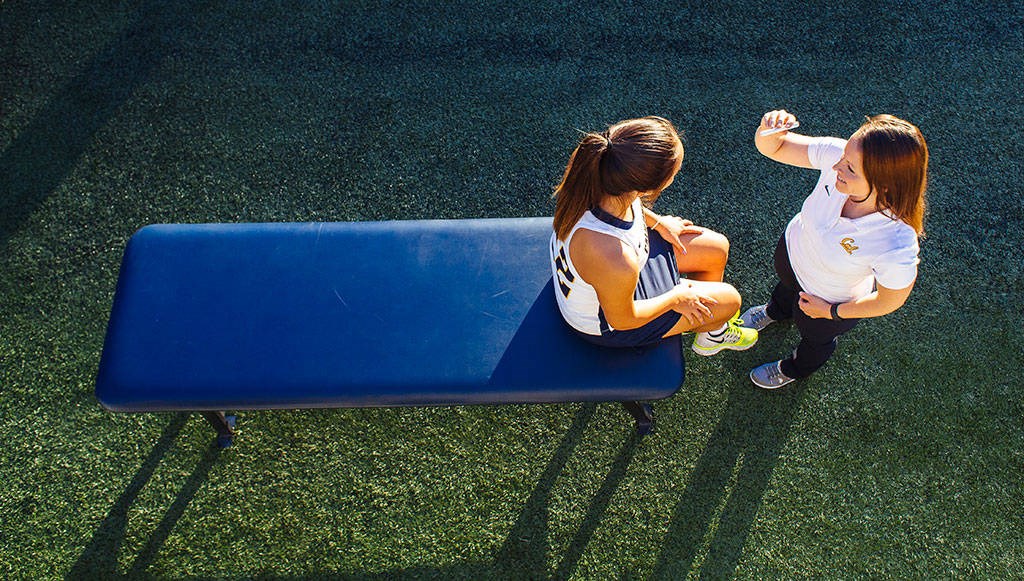Your ability to play sports is dependent upon your ability to see, interpret what you see quickly, and respond correctly to that visual information. The UC Berkeley Sports Vision Clinic is a joint endeavor by the School of Optometry and the Intercollegiate Athletics Department to provide comprehensive sports vision and post-concussion vision care.

Image courtesy of Berkeley Optometry
Concussion is a complex injury to the body’s most complex organ. Like a yolk surrounded in egg white, the brain rests in a protective buffer of cerebrospinal fluid. An impact of sufficient force to the head can cause the brain to shift around in that fluid, rapidly twisting or colliding with the inside of the skull. With concussion, there is no structural damage to the brain, so the injury very rarely shows up on scans.
“Concussion is tough to diagnose. It’s really tough,” says Jeremy Shumaker of the Sports Vision Clinic. “And it’s frustrating because you might see a patient on day one and they look fine. But on day seven, they could be having all kinds of symptoms.”
Indeed, concussion symptoms can occur minutes, days, or even weeks following a head impact. They range from nausea, lack of coordination, and confusion, to mood and behavior changes such as anxiety, depression, and anger. Importantly in the football context, the long-term negative impacts of concussions are believed to be cumulative. Players are particularly vulnerable while still recovering from a previous concussion. But knowing when a player has fully recovered is tricky for doctors, trainers, and coaches, who often must rely on the subjective reporting of athletes eager to get back on the field.
The key, Shumaker says, is the hunt for a biomarker, a physiological indicator of the presence and severity of a concussion. At the Sports Vision Clinic inside Berkeley’s Simpson Center for Student-Athlete High Performance, Shumaker and his colleagues have focused on a surprising one: the eyes. “That might seem weird,” Shumaker says. “But the eye is a natural biomarker.” That’s because the array of systems that govern eye movement and vision are enmeshed in every region of the brain. So no matter where in the brain an injury has occurred, it is likely to be reflected in the function of the eyes.
The Sports Vision Clinic was created in 2015 in partnership with Cal Athletics to advance this new area of research. Cal athletes who have experienced head impacts undergo a rigorous visual screening that can identify concussion, allowing for treatment and hopefully preventing a player from reentering the game injured. The clinic has become a community resource, accepting referrals from hospitals around the Bay Area, including UCSF and Stanford, for concussed patients of all ages.



